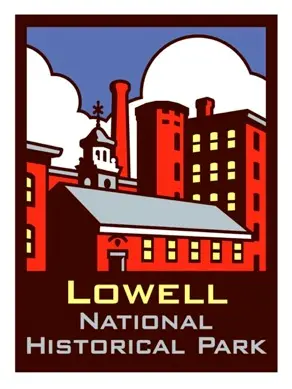From Farm to Factory: The Nutter's Workday
Introduction: Life changed dramatically for those who left family farms to work in the growing mill cities of New England. Follow Emily and Edward Nutter through a typical day on their farm, and a typical day in
Introduction: Life changed dramatically for those who left family farms to work in the growing mill cities of New England. Follow Emily and Edward Nutter through a typical day on their farm, and a typical day in the factory. Students will learn about both ways of life and compare them with their own lives today.
Level: Grades 3-6, with extension activities
Time: 30-45 minutes
- Lesson Preparation
- Prior Knowledge Required
- Background Information
- Vocabulary
- Anticipated Student Preconceptions/Misconceptions
- Frameworks Connections
- Guiding Questions
- Objectives
- Activity
- Assessment
- Differentiated Suggestions
- Adapting the Activity for Other Grades
- Bibliography
- Rubric
- Print Entire Lesson Plan
Nutter_PrepLesson Preparation
Photocopy student worksheets.
PriorKnowledgePrior Knowledge RequiredKnowledge
Students should understand what the Industrial Revolution was and why people left farms to move to cities to work in factories.
BackgroundBackground Information
From Farm to Factory: the Beginning of Industrialization in New England
VocabularyVocabulary
Spinning Frame—a machine that spins cotton into yarn in the mill.
Boardinghouse—a house where mill workers lived.
Carding Machine—machines that brush out the raw cotton fibers.
AnticipatedAnticipated Student Preconceptions/Misconceptions
Life on the farm was much easier than life in a factory, with much less to do.
FrameworksFrameworks Connections
Massachusetts Frameworks
History/Geography: 3.12: Explain how objects or artifacts of everyday life in the past tell us how ordinary people lived and how everyday life has changes. Draw on the services of local historic societies and museums as needed.
English/Language Arts Learning Standards
1.2 Follow agreed-upon rules for class discussion and carry out assigned roles in self-run small group discussions. 3.3 Adapt language to persuade, to explain, or to seek information.
New Hampshire Frameworks
US/NH History: SS:HI:4:4.3: Investigate the evolution of the United States economy, e.g., the transition from farms to factories or the trend from small local stores to shopping malls. (Themes: D: Material Wants and Needs G: Science, Technology, and Society)
Common Core State Standards
Engage effectively in a range of collaborative discussions (one-on-one, in groups, and teacher-led) with diverse partners on grade topics and text, building on others’ ideas and expressing own clearly.
GuidingGuiding Question
What was life like on a farm, and in the factory 150 years ago? How were they similar and different to students’ lives today?
ObjectivesObjectives
Students will be able to:
- List two farm jobs for either a girl or a boy.
- Describe three ways that life was different on a farm and in a factory.
- Explain how their lives today are similar and different from life on a farm and in a factory.
ActivityActivity
- As a class, brainstorm what “work” means. Guide discussion to include paid jobs but also tasks done someplace like a farm.
- Copy and distribute “From Farm to Factory: the Beginning of the Industrial Revolution in New England” to students.
- Read “From Farm to Factory: the Beginning of the Industrial Revolution in New England” to the students. Students follow along, underlining phrases that sound like work, job or tasks.
- Ask group “Just from reading this, where would you prefer to work, the farm or the factory? Why?”
- Copy and distribute "Emily Nutter’s Workday on the Farm and in the Mill" to the girls and “Edward Nutter’s Workday on the Farm and in the Mill” to the boys.
- Have students work in small groups of the same gender. Each group will examine the schedule of Emily or Edward on the farm.
- Using the “Farm Activities Worksheet,” each group will list the work that Emily or Edward does on the farm. Next to each activity, they should write down how it contributes to the family’s life. For example: Edward:--Dig potatoes—helps the family have food.
- Jigsaw groups so each group has some boys and some girls. Students compare the work that boys and girls did on the farm.
- Staying in those groups, students examine the day in the factory, comparing and contrasting work and life on the farm and in the factory.
- Using the attached “Farm vs. Factory” sheet, each group will create two lists: Similarities of Farm and Factory, and Differences between Farm and Factory. Example: Similarity: Everyone worked hard on farm and in factory. Difference: On a farm, you did different things all day, and in the factory, you did the same thing all day.
- Using Emily/Edward’s schedules as guides, have students work independently to create a schedule of their own days.
- Ask students: How are their own lives similar or different from farm or factory life. Why?
Discuss the following as a class, or as an exit ticket (write three sentences):
Give two examples of how is your life different from Emily/Edward’s lives on the farm or in the factory? Why is it so different?
Writing Extension for grades 5-12:
Based on your reading, the lives of Emily and Edward, and your small group discussion, answer the following question:
Would you have preferred to work on a farm, or work in the factory? Why?
Criteria:
- Cite three examples from the reading and worksheets to support your decision.
- Explain why you chose those examples to support your decision.
Nutter_AssessAssessment
Download the rubric for this lesson.
Differentiated SuggestionsDifferentiated
You can conduct this activity in small groups, in pairs, or as a whole group discussion with teacher taking notes on the board.
Adapting the Activity for Other Grades Adapting_nutter
For older students, add on the writing extension. The length of the expected response will depend upon the age of the students, with more advanced students giving longer, more thought-out responses.
Bibliography Bibliography
Grade 3-5: The Bobbin Girl, Emily Arnold McCully.
Grade 5+: Lyddie, Katherine Patterson
RubricRubric
Download the rubric for this lesson.
Print the entire lesson plan: From Farm to Factory: The Nutter's Workday
the factory. Students will learn about both ways of life and compare them with their own lives today.Level:Grades 3-6, with extension activities
Time:30-45 minutes
- Lesson Preparation
- Prior Knowledge Required
- Background Information
- Vocabulary
- Anticipated Student Preconceptions/Misconceptions
- Frameworks Connections
- Guiding Questions
- Objectives
- Activity
- Assessment
- Differentiated Suggestions
- Adapting the Activity for Other Grades
- Bibliography
- Rubric
- Print Entire Lesson Plan
Nutter_PrepLesson Preparation
Photocopy student worksheets.
PriorKnowledgePrior Knowledge RequiredKnowledge
Students should understand what the Industrial Revolution was and why people left farms to move to cities to work in factories.
BackgroundBackground Information
From Farm to Factory: the Beginning of Industrialization in New England
VocabularyVocabulary
Spinning Frame—a machine that spins cotton into yarn in the mill.
Boardinghouse—a house where mill workers lived.
Carding Machine—machines that brush out the raw cotton fibers.
AnticipatedAnticipated Student Preconceptions/Misconceptions
Life on the farm was much easier than life in a factory, with much less to do.
FrameworksFrameworks Connections
Massachusetts Frameworks
History/Geography: 3.12: Explain how objects or artifacts of everyday life in the past tell us how ordinary people lived and how everyday life has changes. Draw on the services of local historic societies and museums as needed.
English/Language Arts Learning Standards
1.2 Follow agreed-upon rules for class discussion and carry out assigned roles in self-run small group discussions. 3.3 Adapt language to persuade, to explain, or to seek information.
New Hampshire Frameworks
US/NH History: SS:HI:4:4.3: Investigate the evolution of the United States economy, e.g., the transition from farms to factories or the trend from small local stores to shopping malls. (Themes: D: Material Wants and Needs G: Science, Technology, and Society)
Common Core State Standards
Engage effectively in a range of collaborative discussions (one-on-one, in groups, and teacher-led) with diverse partners on grade topics and text, building on others’ ideas and expressing own clearly.
GuidingGuiding Question
What was life like on a farm, and in the factory 150 years ago? How were they similar and different to students’ lives today?
ObjectivesObjectives
Students will be able to:
- List two farm jobs for either a girl or a boy.
- Describe three ways that life was different on a farm and in a factory.
- Explain how their lives today are similar and different from life on a farm and in a factory.
ActivityActivity
- As a class, brainstorm what “work” means. Guide discussion to include paid jobs but also tasks done someplace like a farm.
- Copy and distribute “From Farm to Factory: the Beginning of the Industrial Revolution in New England” to students.
- Read “From Farm to Factory: the Beginning of the Industrial Revolution in New England” to the students. Students follow along, underlining phrases that sound like work, job or tasks.
- Ask group “Just from reading this, where would you prefer to work, the farm or the factory? Why?”
- Copy and distribute "Emily Nutter’s Workday on the Farm and in the Mill" to the girls and “Edward Nutter’s Workday on the Farm and in the Mill” to the boys.
- Have students work in small groups of the same gender. Each group will examine the schedule of Emily or Edward on the farm.
- Using the “Farm Activities Worksheet,” each group will list the work that Emily or Edward does on the farm. Next to each activity, they should write down how it contributes to the family’s life. For example: Edward:--Dig potatoes—helps the family have food.
- Jigsaw groups so each group has some boys and some girls. Students compare the work that boys and girls did on the farm.
- Staying in those groups, students examine the day in the factory, comparing and contrasting work and life on the farm and in the factory.
- Using the attached “Farm vs. Factory” sheet, each group will create two lists: Similarities of Farm and Factory, and Differences between Farm and Factory. Example: Similarity: Everyone worked hard on farm and in factory. Difference: On a farm, you did different things all day, and in the factory, you did the same thing all day.
- Using Emily/Edward’s schedules as guides, have students work independently to create a schedule of their own days.
- Ask students: How are their own lives similar or different from farm or factory life. Why?
Discuss the following as a class, or as an exit ticket (write three sentences):
Give two examples of how is your life different from Emily/Edward’s lives on the farm or in the factory? Why is it so different?
Writing Extension for grades 5-12:
Based on your reading, the lives of Emily and Edward, and your small group discussion, answer the following question:
Would you have preferred to work on a farm, or work in the factory? Why?
Criteria:
- Cite three examples from the reading and worksheets to support your decision.
- Explain why you chose those examples to support your decision.
Nutter_AssessAssessment
Download the rubric for this lesson.
Differentiated SuggestionsDifferentiated
You can conduct this activity in small groups, in pairs, or as a whole group discussion with teacher taking notes on the board.
Adapting the Activity for Other Grades Adapting_nutter
For older students, add on the writing extension. The length of the expected response will depend upon the age of the students, with more advanced students giving longer, more thought-out responses.
Bibliography Bibliography
Grade 3-5: The Bobbin Girl, Emily Arnold McCully.
Grade 5+: Lyddie, Katherine Patterson
RubricRubric
Download the rubric for this lesson.
Print the entire lesson plan: From Farm to Factory: The Nutter's Workday


